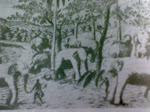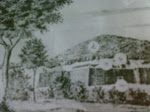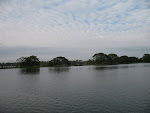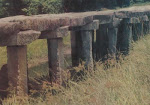
HISTORY

the former which was used to describe a certain variety of sailing crafts and the latter,
which means “port”. So “Hambantota” really means the port of “Hambans”. The town
associated with this port as well as the administrative region around it came to be known by this name.
“Hambans”
A “hamban” was a particular variety of sailing crafts built by joining two
boats together. This type of sailing craft was commonly used for ocean navigation.
It was popular among the Chinese, Malays and Moors who inhabited the Asian region.
The word “hamban” is believed to have come from the Chinese word “sampam”.
The Chinese called these vessels “sampam”. Various nations used fairly similar words to refer them. Malays called them “hamban”, the English used the term “sampan”, the Portuguese referred to them as “shampoo” or “shampana”
Thus it is quite possible that the Sinhala word “hamban” is a derivation of the word “sampan” via the Malay and Tamil Languages.
However, one does not encounter this word very often in ancient writings. ”Sambana” a somewhat similar word occurs in the Saddharmarathnavali, “sambanaka” and “samban” are found in the Rajavali and “hamban” is found in the Gangarohana Warnana. The word “sambaruwa” which is mentioned in the Sabaragamu Devale Sannasa which was produced in the 15th century command of King Parakramabahu VI (1412-67) was also used to describe a certain type of sailing craft.
“Tota”
There is no historical evidence to confirm that this place which is located on the southeast coast of Sri Lanka
According to some oral traditions current among the resident of the region, King Gajabahu I (114-136 A.D) who invaded the Chola kingdom in south India and brought back the Sinhalese who had been taken to India as slaves by the Chola invaders and some Chola prisoners as well in retaliation, is supposed to have landed at this port on his return to the Island, and since the vessels used by him for this expedition were known as “hamban”, this port had, thereafter come to known as “Hambantota”. But, there is no historical evidence to prove this story.
Going by acceptable historical evidence, it is clear that Hambantota began to grow in importance as a sea port towards the latter part of the medieval period. This port which was constructed on a strip of land extending seawards afforded protection from the raging waves and currents of the sea was very spacious as well and was very well known among sailors who plied the ocean-routes at that time.
In medieval period Sri L anka had relationships with foreign countries such as China , South India, East Indies and Arabia . There are evidence that Buddhist people of countries such as Malay, East Indies had very friendly ties with Buddhists of Sri Lanka. During that period Malay vessels known as “hambans” used to arrive this port. According to Professor Senarat Paranavithane that port became Hambantota because of that.
At this time Kandyan kingdom got supplied salt from Hambantota.The Dutch realized the importance of Hambantota and set up offices around the port of Hambantota
During British period Hambantota developed as a town. It became the most important centre of the district. And it has also developed as a naval centre. They built a Kachcheri, schools, police station etc. Then it became the principal town of the district. In this case we have evidence that name Hambantota has a history of nearly five centuries.
THE GREAT KINGD OM
Hambantota district was the home of a great civilization of Sri Lankan history. The kingdom of Rohana Anuradhapura
The people of Ruhuna united around their kings such as Dutugemunu (161-139 B.C) Dhatusena (455-473 A.D) and Vijayabahu I (1055-1110) and supported to reunify the island. And when Buddhism was in danger Viharas of Ruhuna protected it. Ruhuna has done a massive work to make Sri Lanka
There are some evidence pre-history (before Aryan’s arrival) of this area. The
evidence show that two races of people who were known as rakshas and yakkhas. Books say 4000 years ago a race of people known as Yakkhas and Rakshas used this region for their residencies.
The Ramayanaya says Lankapura was the principal city of King Ravana
If this can be true or accepted, it says the capital city of most ancient kingdom, was located in Ruhuna.
Detailed historical information of Ruhuna is available only after the arrival of Aryans (543 B.C). The Aryans who were the founders of the Sinhala race, began to establish settlements in this regi on as well.
on as well.
 on as well.
on as well.Ruhuna developed as a kingdom only after Prince Mahanaga, who was a brother of Devanampiyatissa. He left Anuradhpura because of a personal quarrel and took up residence in Ruhuna. Afterwards he started to develop this region as a kingdom.He laid the foundation of kingdom of Rohana
He made Tissa wewa, Debara wewa and Yodha wewa by using Kirinda-nadi (Kirindi Oya) which flowed through this territory. And transformed surrounding terrain in to copious fields.
A number of kings contributed their service to the region by building a complex of irrigation projects and Buddhist shrines and stupa.
The most outstanding kings were Kawantissa, Dutugemunu (161-137 B.C), Walagamba (103/89-77 B.C) , Vassabha (76-111 A.D ) Vijayabahu I (1055-110 A.D) and Parakramabahu I (1153-1186 A.D).
) Vijayabahu I (1055-110 A.D) and Parakramabahu I (1153-1186 A.D).
 ) Vijayabahu I (1055-110 A.D) and Parakramabahu I (1153-1186 A.D).
) Vijayabahu I (1055-110 A.D) and Parakramabahu I (1153-1186 A.D).The Kingdom of Ruhuna



